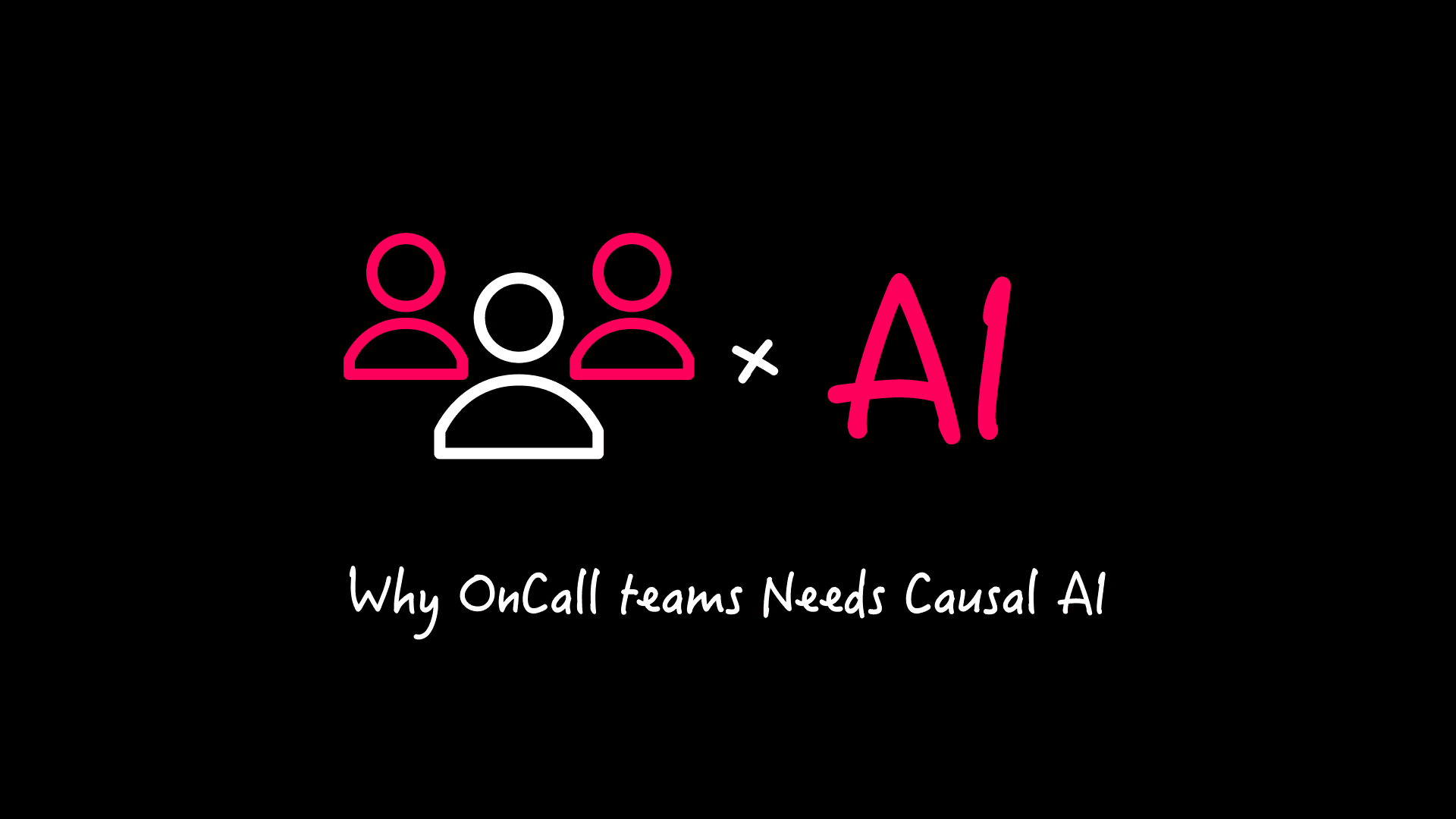Why OnCall teams Needs Causal AI
Why OnCall teams need Causal AI: Move beyond correlation to true root cause analysis for faster incident resolution

Spiros Economakis
Founder & CEO

Why OnCall teams need Causal AI: Move beyond correlation to true root cause analysis for faster incident resolution

Spiros Economakis
Founder & CEO

When Microsoft introduced the Azure SRE Agent at Build, it felt like a milestone—finally, a hyperscaler acknowledging what practitioners have known for years:
SRE today is still far too manual.
But here’s the thing: automation alone won’t change that.
Most AI in observability today is built to summarize, not to understand. It aggregates logs, identifies outliers, maybe correlates spikes with recent deployments. But it can’t answer the one question that actually matters during an incident:
Why did this happen?
That’s the gap Causal AI is designed to close.
Causal AI isn't just a buzzword. It’s a class of systems that go beyond correlation to infer causation—what caused what, not just what happened near what.
In the context of SRE, it’s the difference between:
Causal AI doesn’t just see data—it tries to explain it.
This is not trivial. It requires reasoning across time, structure, interaction, and behavior. Let’s break that down.
To understand how Causal AI can assist SREs, it helps to think in layers of causality. Each one adds nuance and depth to incident analysis.
This is the most intuitive form of causal reasoning. If metric A changed before metric B, and it happens consistently, we begin to suspect A influences B. But production systems are noisy. Timing alignment is rarely perfect.
Causal AI here isn’t just doing timestamp comparison—it’s identifying patterns of lagged relationships,
e.g.: Deployment → latency increase → retry spike → queue depth saturation
Temporal causality is foundational because it helps build timelines, establish probable triggers, and identify sequences that recur across incidents.
Human analog: The first question we ask post-incident is often, “What changed before this started?
This layer focuses on the system graph—dependencies, configurations, runtime connections.
Think:
Structural causality looks for deltas in how the system is composed or connected. It’s not about what failed—it’s about what’s different. And that difference may explain an increased error budget burn rate—even before a specific metric trips.
Human analog: "This didn’t happen yesterday. What changed in our system graph?"
Real failures cascade.
An upstream timeout may cause retries, which clog queues, which increase latency downstream, which eventually leads to customer-visible issues. Causal chains are rarely linear. This is where Causal AI shines over traditional observability tools. It doesn’t stop at what is degraded—it asks:
This reasoning mirrors what experienced SREs do manually—except machines don’t get tired at 3AM.
Often, the incident isn’t inside the service—it’s in how services talk to each other.
Retries. Timeouts. Load balancing misroutes. Throttling.
Causal AI here models interaction graphs, not just system graphs. It identifies failure at the boundary—not the node:
Understanding communication-level causality is key to diagnosing modern distributed systems, where symptoms live far from their source.
Not all failures are created equal.
A 5% latency increase in a batch process doesn’t carry the same weight as a 0.5% error rate in a checkout API for enterprise customers with a 99.99% SLA.
This is where intent-aware reasoning becomes critical.
Causal AI at this layer doesn’t just understand what broke—it understands who it impacts, what expectations are tied to it, and whether the failure matters from a reliability, revenue, or trust standpoint.
Human analog: "Yes, this metric looks bad—but does it affect our customers?"
SREs already face high cognitive loads.
They work across fragmented tools, complex topologies, and increasing expectations for uptime and speed.
Causal AI doesn’t just promise speed. It promises clarity—a chance to stop chasing symptoms and start seeing root causes with context. It allows us to:
But only if we build it thoughtfully. Not as another alerting system. Not as a summarizer. But as a reasoning engine for modern operations.
Causal AI tells you what matters. Agentic AI helps you do something about it.
Imagine this flow:
That’s not AI replacing engineers. That’s AI supporting engineers—in the way we’ve always wanted from our tooling.
The future of SRE isn’t more dashboards. It’s systems that understand.
AI won’t make us better engineers unless it reflects how we actually think—about causality, about impact, about trust.
Let’s stop asking “What’s broken?” and start building systems that ask:
“Why did this break—and what’s the next best decision?”
Because that’s where leadership lives.
Not in noise, but in clarity.
90% faster root cause. 30% fewer incidents.
Zero surprise outages.